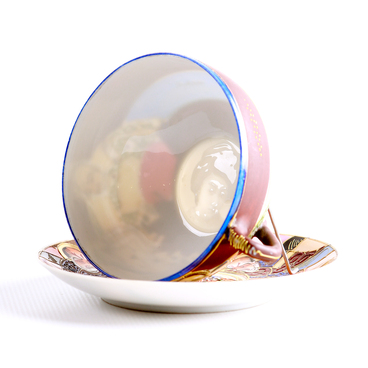The exhibition of the Kasimov Museum-Reserve contains a physharmonica‒ a keyboard instrument fitted with free reeds that was popular in the 19th — 20th centuries.
Its name came from the Greek words fusa — ‘blacksmith’s bellows’ and armonia — “harmony”. The tonality of the physharmonica was five octaves which helped musicians perform classical melodies and improvise as well.
Physharmonica was quite large in size: the length of the item of the museum collection is 97 centimeters, and its width — 110 centimeters. People played it by sitting and putting their feet on two pedals in the lower part of the instrument.
Inside, the physharmonica resembled an organ or clarinet: it consisted of lots of metal reed pipes. A musician simultaneously pressed the pedals which regulated the air supply to the pipes and the key that created the desired sound.
The physharmonica appeared in the early 19th century. The very first model was created by the Viennese craftsman Anton Haeckl in 1818. It was originally smaller in size and had only one pedal. It was redesigned over the next decades. The modern design of the physharmonica was created in 1840 and patented by the French inventor Alexandre Debain.
At first, the physharmonica was used in Catholic churches and cathedrals in Europe. Since some parishes could not afford a full-fledged organ and its transportation, they acquired a physharmonica‒ more compact but similar to the organ in its sound and tonality. Moreover, the physharmonica did not require any special care and could work even in harsh weather conditions, including the northern regions with their high humidity and constant rains.
In the early 19th century and the late 20th century, people tended to buy this musical instrument to have it at home. In Russia, it was possible to find the physharmonica in small temples, family chapels and in the living rooms of wealthy citizens.
There are a lot of plays written for the physharmonica by composers. Most of the works were melodious slow tunes that made you feel calm and concentrated.
Its name came from the Greek words fusa — ‘blacksmith’s bellows’ and armonia — “harmony”. The tonality of the physharmonica was five octaves which helped musicians perform classical melodies and improvise as well.
Physharmonica was quite large in size: the length of the item of the museum collection is 97 centimeters, and its width — 110 centimeters. People played it by sitting and putting their feet on two pedals in the lower part of the instrument.
Inside, the physharmonica resembled an organ or clarinet: it consisted of lots of metal reed pipes. A musician simultaneously pressed the pedals which regulated the air supply to the pipes and the key that created the desired sound.
The physharmonica appeared in the early 19th century. The very first model was created by the Viennese craftsman Anton Haeckl in 1818. It was originally smaller in size and had only one pedal. It was redesigned over the next decades. The modern design of the physharmonica was created in 1840 and patented by the French inventor Alexandre Debain.
At first, the physharmonica was used in Catholic churches and cathedrals in Europe. Since some parishes could not afford a full-fledged organ and its transportation, they acquired a physharmonica‒ more compact but similar to the organ in its sound and tonality. Moreover, the physharmonica did not require any special care and could work even in harsh weather conditions, including the northern regions with their high humidity and constant rains.
In the early 19th century and the late 20th century, people tended to buy this musical instrument to have it at home. In Russia, it was possible to find the physharmonica in small temples, family chapels and in the living rooms of wealthy citizens.
There are a lot of plays written for the physharmonica by composers. Most of the works were melodious slow tunes that made you feel calm and concentrated.


